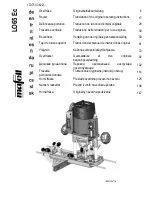
PIM Configuration Commands
709
are permitted as BSR, the router will not receive and forward other BSR
information and legal BSR will not compete with it.
The above two points can partially protect the security of BSR in the network.
However, if a legal BSR router is controlled by an attacker, it will also lead to the
above problem.
The source parameter in the related rule command is translated as BSR address in
bsr-policy command.
For the related commands, see acl and rule.
Example
Configure BSR filter policy on a router. Only permit 1.1.1.1/32 to act as BSR and
regard others are invalid.
<3Com-pim] bsr-policy 1
<3Com-pim] quit
<3Com] acl number 1
<3Com-acl-basic-1] rule 0 permit source 1.1.1.1 0
c-bsr
Syntax
c-bsr interface-type interface-number hash-mask-len [ priority ]
undo c-bsr
View
PIM view
Parameter
interface-type interface-number: Interface type and interface number of a router.
A candidate BSR is configured on this interface. PIM-SM must be enabled on this
interface, the configuration can take effect.
hash-mask-len: Mask length. The mask performs “And” operation with multicast
address at first and then performs the operation of searching for RP. The value
ranges from 0 to 32.
priority: Priority of the candidate BSR. The larger the value is, the higher the
priority of candidate BSR is. The value ranges from 0 to 255. By default, the
priority is 0.
Description
Using the c-bsr command, you can configure a candidate BSR. Using the undo
c-bsr command, you can remove the candidate BSR configuration.
By default, no candidate BSR is set.
Since BSR and other devices in PIM domain need to exchange a great deal of
information during candidate BSR configuration, a relatively large bandwidth must
be guaranteed.
Summary of Contents for Router 3031
Page 6: ......
Page 686: ...686 CHAPTER 6 ROUTING PROTOCOL...
Page 758: ...758 CHAPTER 7 MULTICAST COMMON CONFIGURATION COMMANDS...
















































